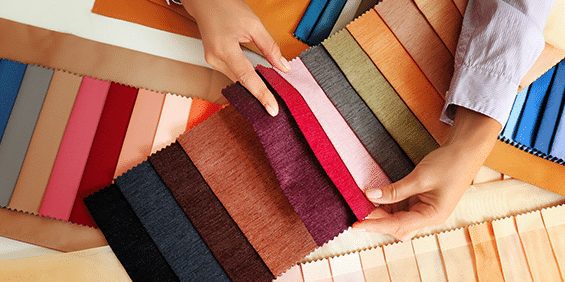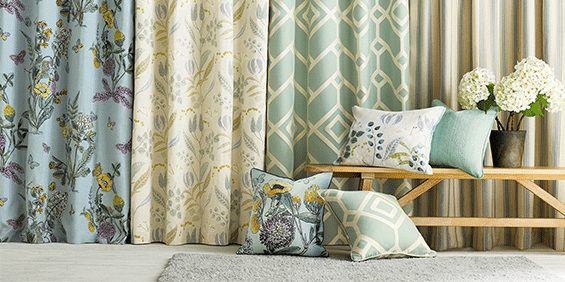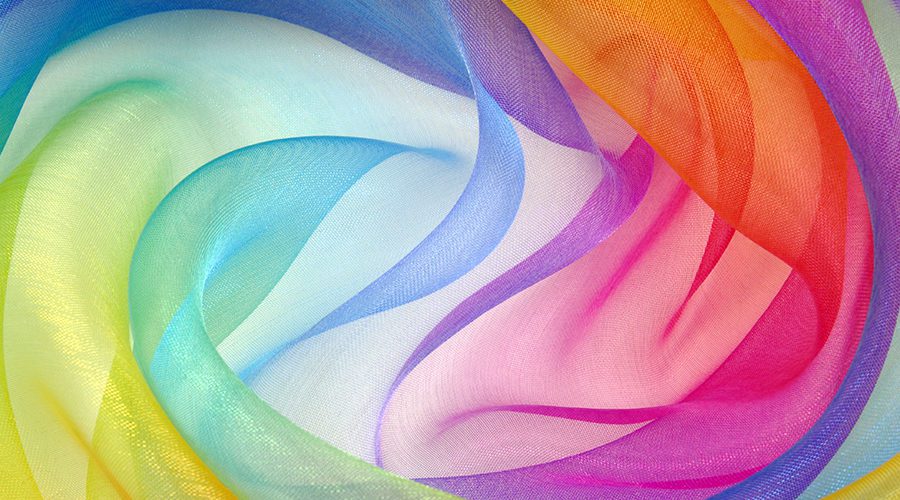Here at Datacolor, we naturally talk a lot about measuring color. But there are two other textile qualities our spectrophotometers can measure: sheerness and light blocking properties. Today, we’re going to explore what these are, how they’re different from each other, and their applications.
Before we dive in, note that “sheerness” and “light blocking” aren’t equivalent properties, and aren’t measured in the same ways. That said, both are useful qualities to describe fabrics, so it’s important to understand the differences.
Essentially, light blocking refers to the extent to which fabric reduces the amount of light that passes through it. What does sheerness mean? Sheerness (or opacity) refers to the way light is reflected from a fabric and the background that it covers.
Measuring Light Blocking and Sheerness

A material’s light-blocking properties can only be measured on an instrument that supports measurement in transmission mode. In this mode, the spectrophotometer measures light passing through samples placed behind it. To evaluate sheerness, you would use reflectance mode to measure reflected light for a sample placed in front of the spectrophotometer. It’s also important to know that reflectance changes based on color, stretching, wetness, background color and other factors.
The American Association of Textile Chemists and Colorists (AATCC) in 2014 announced two methods for measuring the light-blocking fabric for window coverings:
- Photodetector – AATCC TM148-2014
- Spectrophotometric – AATCM TM203-2014
Manufacturers can use Datacolor spectrophotometers with transmission capabilities to test using the second, newer method. According to the AATCC method, the test is applicable to all types of fabrics, but not recommended for some mesh materials.
Measuring Light: Practical Applications
Light blocking fabric

Light-blocking test methods only apply to window coverings. And if you’ve ever bought curtains labeled “light blocking fabric,” you’re probably familiar with the benefits of this property.
Interestingly, while the AATCC has established test methods for light blocking, it has not established standards. This means that it’s up to manufacturers and retailers to establish for themselves how much light must be blocked in order to label a window covering as being made from “light-blocking fabric” or “blackout”. Without an industry standard, the definition can vary widely. Those interested in establishing a standard for light blocking should share their needs and recommendations with AATCC’s Color Measurement committee (RA-36).
Many retailers offer “light-blocking fabric” or “blackout” drapes, curtains and blinds. Some also offer light-blocking fabric liners that customers can use with their existing window coverings. Like the window coverings themselves, many styles and price points are available.
If the market were limited to bedroom curtains for third-shift workers and college students who sleep until noon, it would be small indeed. But retailers are actively marketing the products more widely, including for children’s bedrooms, media rooms, and to reduce noise and drafts. These coverings are also marketed for energy efficiency, with heavier or lined fabrics keeping warm air in, and light-blocking properties reducing the heat of intense sunlight.
Online, product descriptions and interior design sites tout light blocking fabric lining also reduces noise and provides insulation or blackout curtains that block outside light, minimizes drafts, and helps protect your furniture and rugs from fading. Of course, a spectrophotometer can’t help with determining how effective these materials are at reducing noise or minimizing drafts.
What does sheerness mean when applied to clothing?

Sheerness can also apply to window coverings, but you’ll likely hear it come up more often with clothing. It can be a desirable attribute, critical to a fashion designer’s vision. It can also be undesirable, for instance in swimwear fabrics. It’s important to understand that sheerness does not mean that the fabric fails to block light. In the case of yoga pants, a back light source is not the problem. Instead, the reflected light exposes the background – in this case, the wearer’s skin. When a manufacturer’s testing protocols are incomplete for some of the variables in fabric characteristics, combined with subtle style changes in pattern, the resulting end product can have an unacceptable level of sheerness. To ensure a fabric isn’t overly sheer, a manufacturer would need to test it in a variety of fabric colors, with a wide range of skin colors, and under conditions like stretching that mimic how the buyer would use the clothing.
Connect with an Expert








